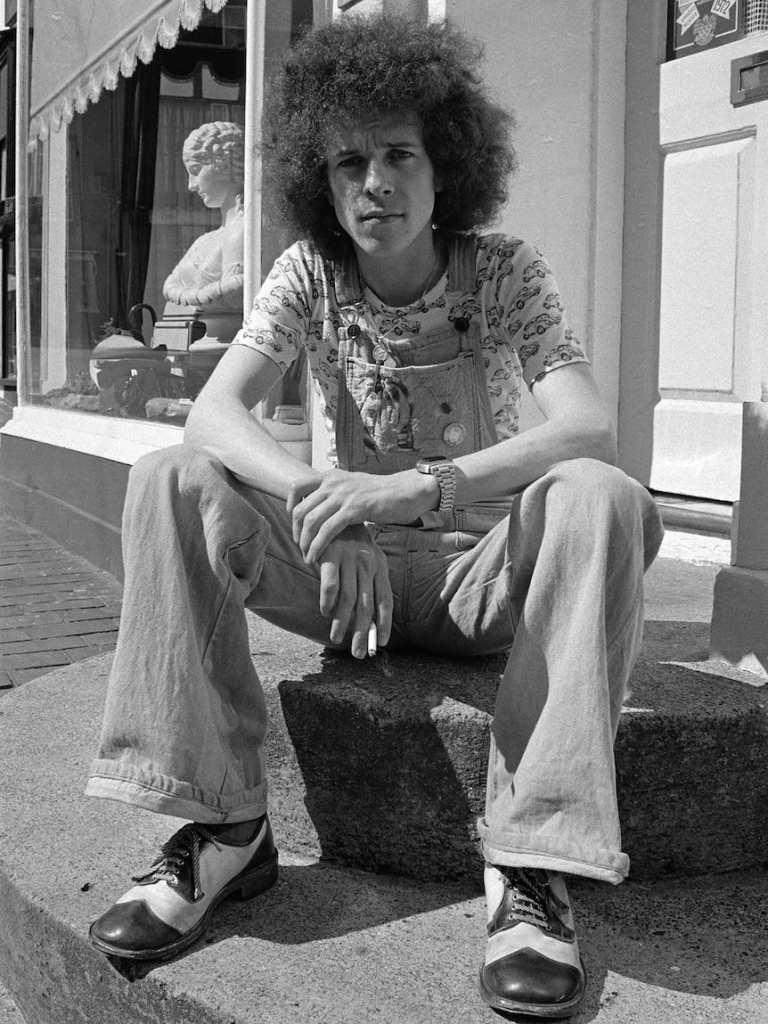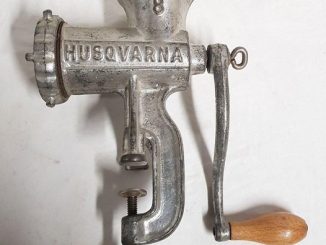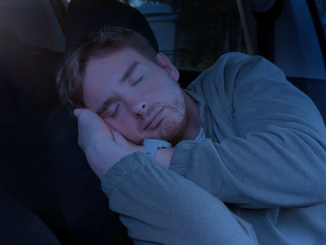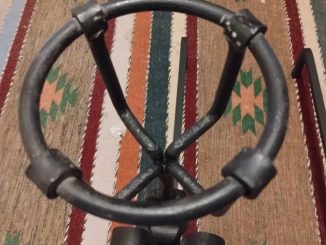“I look at my role as being a friend of Canberra Hospital, I can bring some pleasure and happiness sometimes to people who are really in difficult times in their lives.”
With backing music from a Bluetooth speaker, Sayer croons his way around the cancer wards, making a human connection with everyone he comes across.

Canberra Region Cancer Centre Operations Manager Caroline McIntyre says Sayer’s visits are typically kept a surprise for patients and staff.
“He’s always come in so discreetly,” she says.
“Normally it’s just very quiet, he comes up in the back lift and says hello to literally everybody.
“Some of them are doing it tough, and to have a little bit of joy and light – it really gives them a lift.
“What makes me happy is to see people getting chemo on their feet dancing.”
Jamming with Jimi Hendrix, Countdown and the Troubadour
Originally a graphic designer by trade, English-born Leo Sayer rose to pop prominence in London in the late 1960s, as a singer-songwriter – and was soon adopted by Australia as an honorary son after his first tour here in 1974.
He went on to become an Australian citizen in 2009.
Sayer was a regular on ABC TV’s Countdown during the 70s and 80s, performing chart-toppers like “You Make Me Feel Like Dancing”, “When I Need You”, “More Than I Could Say” and “Orchard Road”.

He blushingly admits they were wild days – when he didn’t always live up to his “good-guy” public persona.
“It was mad, I mean, Top of the Pops in England, Countdown over here,” he says.
“You were mobbed by the fans, I remember being dragged out of a limousine the first tour that I came here, and then speaking to crazy people like Molly Meldrum on TV and trying to sort of like take it all in.”
It seems hard to believe – the petite, well-spoken singer, with a mane of curly hair that inspired changing his name from Gerard to Leo – beating off mobs of screaming fangirls.
Sayer circulated in superstar company, becoming close friends with former Beatles George Harrison and Paul McCartney, collaborating with Roger Daltrey of The Who, and even sharing a sly cigarette or two with John Lennon and Yoko Ono who had a flat above his design studio.
“I met Jimi Hendrix right at the start of his career. I actually jammed with him, playing the harmonica, and him playing the guitar,” he says.
Recalling his 1975 opening night at the famous Troubadour Club in Los Angeles, he looked up to see an intimidating line-up of fans in the front row.

“It was David Bowie, Elton John, and ‘The Fonz’ [Henry Winkler].”
Alongside them: John Cleese, Mick Jagger, Bernie Taupin, and comedian Marty Feldman.
“We never thought it would last, we were adapting to things around us, writing songs about things that are around us,” he says.
“And we thought they were only for our generation — so the amazing thing is my music’s become like a fine wine, where you lay it down and years later, it becomes a collector’s item.
“We’re in an age where the music that I make, young kids are actually latching onto it now, and they’re finding that that generation and that style of music we made is as current now as anything.”
Sayer’s health battles, still spreading hope at 76
Leo Sayer says his hospital charity work caps off a career dedicated to providing joy through music.
“It’s a nice piece of synchronicity really, because I was born in the grounds of a hospital in Shoreham by Sea in Sussex, near Brighton in England,” Mr Sayer said.
“I suppose I’ve always felt comfortable in hospitals and being around hospitals.
“Growing up, my dad was a hospital engineer, Mum was a nurse, my sister was a matron.”

Sayer has health struggles of his own, including three stents in his heart, which help him have a genuine connection to the hospital patients he entertains.
“[My music] is providing something that isn’t taking away from any of the treatment that’s going on. It’s providing something that’s just putting a smile on peoples’ faces.
“Music is communication and that’s what this is all about, we’re communicating, we’re making people feel better.
“We’re not healing people with music, but we are making them feel better about their healing.
“To sell out Canberra Hospital will do me fine.”
My mom prohibited me from seeing my dad, but his phone call changed everything

My mother did everything in her power to prevent me from seeing my father after they divorced. But once my dad tricked me on the phone, and everything changed.
“I don’t want to see you ever again!” my mom yelled as my father got into the car and left our home forever. That was my earliest memory. Dad left when I was two years old after a huge fight with my mother.
They got divorced, and I didn’t see him for many years. As I got older, I realized that my mother was preventing me from seeing my father. “I want to visit Dad. Please!” I begged when I was ten years old.
“No! You can’t go see him. He’s busy with his new family and doesn’t want to see you,” she replied.
“I know that’s not true! You’re lying to me! I talk to him on the phone, and he wants to see me!” I cried, pleading with her to see my father.
“Don’t talk back to me, Alexandra! Your father left us and doesn’t deserve to have a relationship with you now,” Mom said. I thought that was unfair, but I was still just a child.
My dad and I kept in constant contact over the phone, but I really wanted to spend time with him, and I knew he wanted the same. However, Mom was an expert at getting her way.
As a teenager, I decided to go on my own to see him, and she called the cops on me. They picked me up before I could reach his house and drove me back home.
“The next time you try to disobey me, I will say that your father kidnapped you, and he will go to jail where he belongs!” she screamed at me when the cops left.
Back then, I thought she was doing the right thing for me, but as I grew up, I realized that it was pure selfishness on her part. I didn’t want to hang out with her or do anything. I also started rebelling at school. She drove a huge wedge between us, and I didn’t care anymore.
“Alexandra, do you want to go shopping with me?” she asked me one day. I was 17 years old and had grown to almost hate her.
“Nope,” I answered.
“How about the movies?”
“Nope.”
“Why don’t you want to do anything with me?” she whined.
“Really? You’re asking me that question? You know exactly why I treat you this way,” I said in a bored tone.
“I have done nothing to you! All the sacrifices I have made for you, and you’re so ungrateful!” Mom yelled once more.
“Yeah, ok. Close the door, please,” I added.
By then, I was immune to her tantrums and how she victimized herself to get away with things. I moved out as soon as I turned 18 and never looked back.
But seeing my dad wasn’t any easier. I had to work two jobs and go to school. He was also busy with work, and his second wife had just delivered twins by then. Neither of us had time, so we put it off.
I met with him on a Saturday afternoon at his house and met his wife. They showed me the twins, and we talked for a while. But it felt so awkward that I didn’t want to do it again. Maybe my mother had ruined any chance I had at a relationship with him.
We talked on the phone for a long time once a week. I asked about the twins and told him about my life. It wasn’t ideal, but it worked for us. Years went by this way. I didn’t hear of my mother until I was 29 years old.
“Hey, Alexandra,” she spoke on the phone tentatively.
“Oh, hey, Mom,” I answered, confused with her call.
“We haven’t talked in a long time. How are you?” she asked.
“I’m fine. How about you?” I replied. We chitchatted awkwardly for a few minutes, and then she got to the point.
“Listen, honey. I was hoping that we could work on mending our relationship. How does that sound?” Mom wondered.
“I don’t know. Are you going to apologize for everything?” I retorted.
“I…I still don’t think I did anything wrong. I was trying to protect you from being hurt like I was when you were little. But I understand that you felt differently,” she explained.
“So, you’re not apologizing?” I continued, tired of this conversation. She was never going to acknowledge her wrongs, and I had no time for that.
“Alexandra! I’m your mother. You haven’t talked to me in years! You’re so selfish!” she wailed, raising her voice.
“Ok, goodbye,” I said and hung up the phone. She tried calling me back, but I ignored her. I would not let her back into my life until she apologized.
Another year went by, and I received a strange call from my dad. He never called during working hours. “Alexandra! This is an emergency! Can you come to see me?” Dad said urgently through the phone.
“What? Dad? What’s going on?” I asked, worried.
“I sent you an address. Come quickly! This is a matter of life or death!” he told me and hung up.
I went to my boss, took a day off work, and ran to my car. But the address Dad gave me took me right to an amusement park close to his house.
“Hey, honey!” he smiled when I met him at the front gate.
“Dad! Why are we here? What’s the emergency?” I asked, confused.
“The emergency is that you and I never got to do all the fun things father and daughters do over the years. We have put off building a real relationship, and I don’t want to waste any more time. Let’s go have fun!” Dad explained.
“Can you go on the rides? I know you have had some health problems lately,” I said hesitantly.
“I’m fit as a fiddle. Come on!” he urged.
We spent the entire day at the park and talked about everything. I felt like a child for the first time in my life, and it was wonderful.
I also told him about my problems with Mom and how hard it was when she didn’t let me see him. “Your mother is complicated and full of pride. But she’s not evil. We didn’t work out, and she couldn’t take it,” he started.
“Yeah, I wished I could’ve lived with you,” I told him.
“Well, I was pretty lost for many years trying to figure things out. We might have hated each other. But here we are, and I think you should patch things up with her. Life is too short to hold grudges,” he said.
After that marvelous day at the park, we went to dinner. When I got home, I called Mom and told her everything I felt regarding my dad. How she hurt me back then by not letting me spend time with him and how fun our day had been. She cried and apologized to me for the first time. I felt like she understood, and we started talking more often.
Meanwhile, I grew closer to my dad and loved babysitting my twin half-siblings. We even took them to the amusement park for a fun day too.
I finally had the childhood I always wanted.
What can we learn from this story?
Divorce happens between couples, not with children. Alexandra’s mother didn’t understand that her father divorced her but wanted a relationship with their daughter.
Life is too short for grudges. Alexandra’s father is right. Sometimes, it’s better to forgive for your own sake. Let go of things that make you angry, and your mental health will improve.
Share this story with your friends. It might brighten their day and inspire them.



Leave a Reply